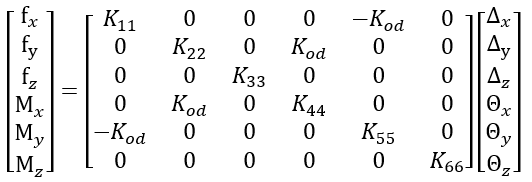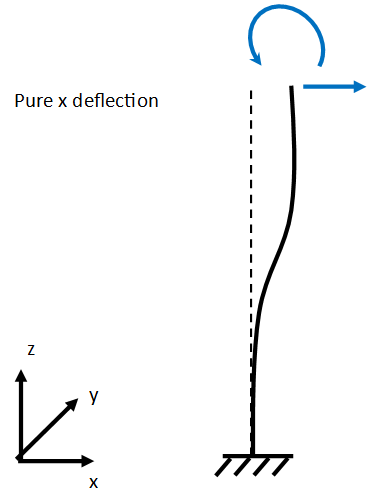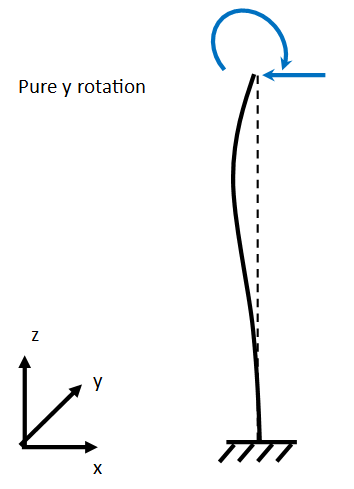Foundation stiffness matrices often have a particular form, with all diagonal terms positive. There are also off diagonal (OD) terms coupling the translation and rotation terms. The off diagonals often have the same value but opposite sign. Why is this?

Stiffness matrices are basically derived by applying unit displacements of each degree of freedom individually and considering the restoring force that results from this displacement. So we can pose the question “if I impose x translation of a degree of freedom, what are the reaction forces” or equivalently “what applied forces and moments are required to give pure x translation”.
For the case of pure x deflection (no rotation) at the tip of a cantilever beam (or a lumped foundation) as sketched below, you’d need a positive x force and a negative y moment to make this deflection shape. This corresponds to column 1 of the stiffness matrix. 
For the “pure rotation” case, you need to apply a positive y moment and a negative x force to make this shape. This is column 5 of the stiffness matrix.
So, we see that by inspecting the stiffness matrix you can answer the question “what force corresponds to a unit displacement of one degree of freedom”. However, you can’t (by simple inspection) answer the question “what displacement do I get by applying a unit force or unit moment” – for this you’d need to invert the stiffness matrix to give you a flexibility matrix, which you could inspect to answer that question.
In other words: you need to read the stiffness equation from right to left, as you multiply out the displacement and stiffness to get the forces and moments
